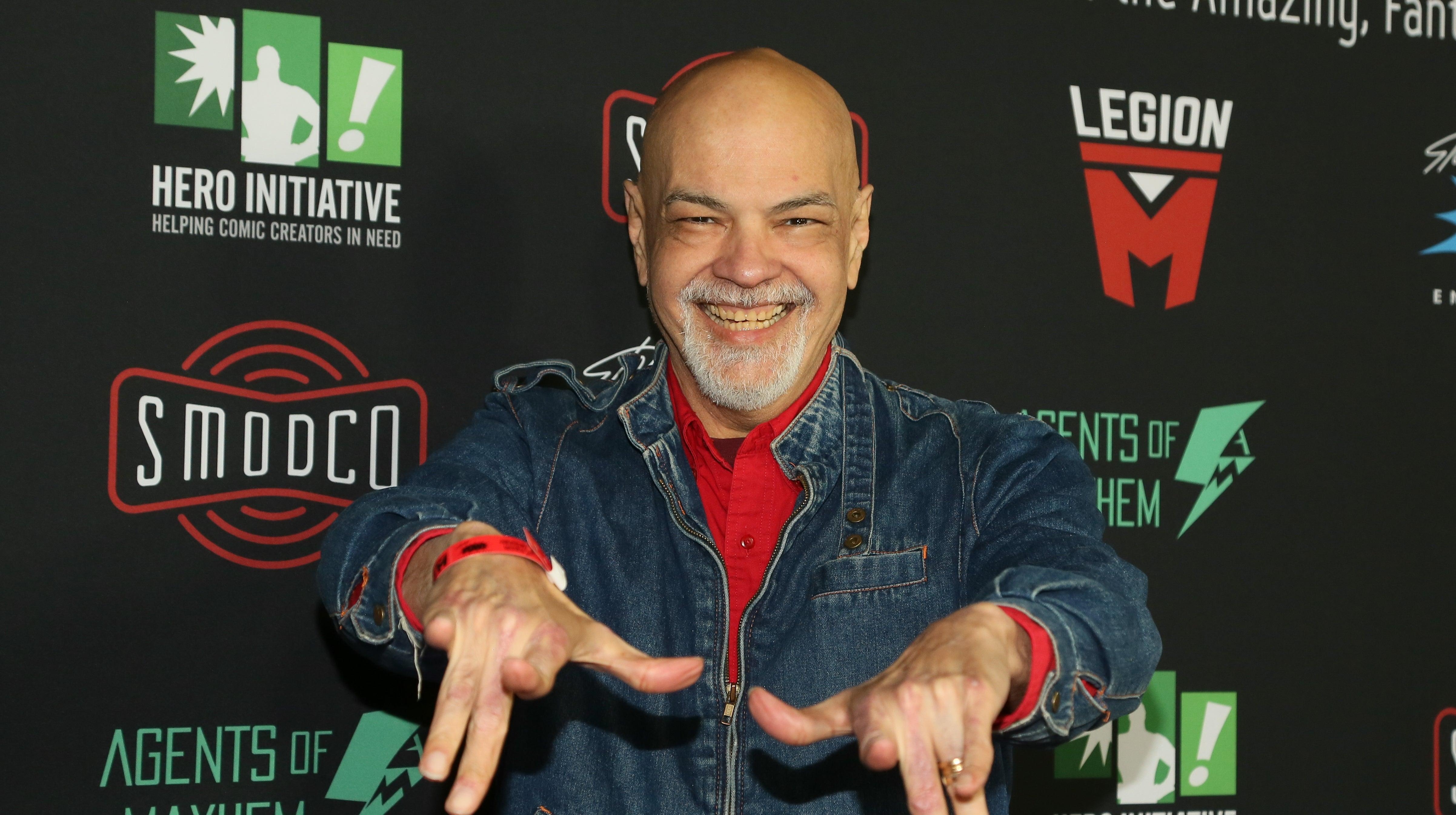R.I.P. legendary comics artist George Pérez
Known for New Teen Titans, Crisis On Infinite Earths, Wonder Woman, and more, Pérez was one of the most influential artists in comics history

George Pérez has died. A legendary comics artist and writer whose work defined the looks of many of both DC and Marvel’s biggest comics from the mid-’70s onward, Pérez was celebrated for runs on Avengers, New Teen Titans, Superman, Wonder Woman, and more. Among other things, he was heralded as one of the great superhero crowd scene artists in the medium’s history; few people have ever cleanly packed as many colorful and distinctive costumed characters into a single full-page splash panel as George Pérez. Per Variety, Pérez died this week from pancreatic cancer. He was 67.
Pérez got his start at Marvel, serving as an artist’s assistant before getting a regular penciling gig drawing a back-up for Deadly Hands Of Kung Fu. In 1975, he moved into the big leagues when he took over art duties on Avengers. He’d spend the next five years on the book, drawing essentially every Avengers member in the team’s history; at the same time, his work began to spread across the Marvel line, appearing in The Inhumans, Fantastic Four, and other books, and building a reputation as one of the company’s go-to artists.
In 1980, though, Pérez began splitting his attention with Marvel’s biggest rivals, taking on pencil duties on DC’s Justice League Of America, and, most notably, The New Teen Titans, which he worked on with former Marvel collaborator Marv Wolfman. The Wolfman-Pérez Teen Titans run was a massively influential (and successful) one, introducing the Robin/Starfire/Cyborg/Beast Boy/Raven grouping that’s been central to so many depictions of the team. It also made stars of both Pérez and Wolfman, to the point that, when DC was looking for a team to helm one of the biggest events in its then-50 year history, they were the natural choices to tackle it.
Crisis On Infinite Earths, published from 1985 to 1986, is, among other things, a testament to Pérez’s unquestionable ability to draw an absolutely absurd number of different superheroes in conflict; across its 12-issue run, telling a story of reality collapsing under attack from the vile Anti-Monitor, Pérez ended up drawing pretty much every caped character in the company’s history. His famed cover to the series’ seventh issue, in which Superman weeps while holding the body of his cousin Supergirl, is rightly celebrated as one of the most iconic images of 20th century comics; the open emotion, the religious posing, and the sight of dozens of other heroes looking on in shocked silhouette solidify its place as pure, unadulterated Pérez.
Although most often credited as an artist, Pérez was also unafraid to tackle writing duties on a comic; most notably, he took the lead on the post-Crisis version of Wonder Woman, successfully launching a new version of the character as both plotter (and eventually full writer) and penciller. The back-to-basics version of the character, which emphasized her connection to Greek myth, was both high successful and extremely influential; any number of future Wonder Woman stories, including Patty Jenkins’ film version, would credit Pérez’s take on the character as inspiration.
In the 1990s, though, Pérez began to chafe against editorial demands from higher ups at DC—and against the time pressures of producing art for multiple high-profile books. Jumping ship back to Marvel after difficulties on a DC event comic, he ran straight into six-issue miniseries The Infinity Gauntlet—inspiration for much of the Thanos plot in the recent Avengers movies. Pérez ultimately only drew half of the series, before duties were returned to Silver Surfer artist Ron Lim.
Even so, Pérez was still, well, George Pérez. The next 20 years of comics history saw him regularly return to working for both companies—a celebrated run on Avengers here, a turn at Superman there—while also pursuing his own independent efforts. (Among other things, he’s the rare artist to have contributed to all three of D.C.’s big “Crisis” comics, lending art to both Infinite Crisis and Final Crisis in the new millennium.) Pérez continued to produce comic art up through the mid-2010s, until health issues forced him to finally formally retire in 2019.
In addition to his work as a creator, Pérez was also an advocate for helping creators hard-done by the industry; he served as co-chair of The Hero Initiative, which raises money to help comics professionals in need. His death was announced this week by his friend Constance Eza, who wrote, “He was not in pain and knew he was very, very loved.”
Tributes to Pérez, from fans, contemporaries, and the untold number of artists inspired by his work have already begun to flow out on social media.